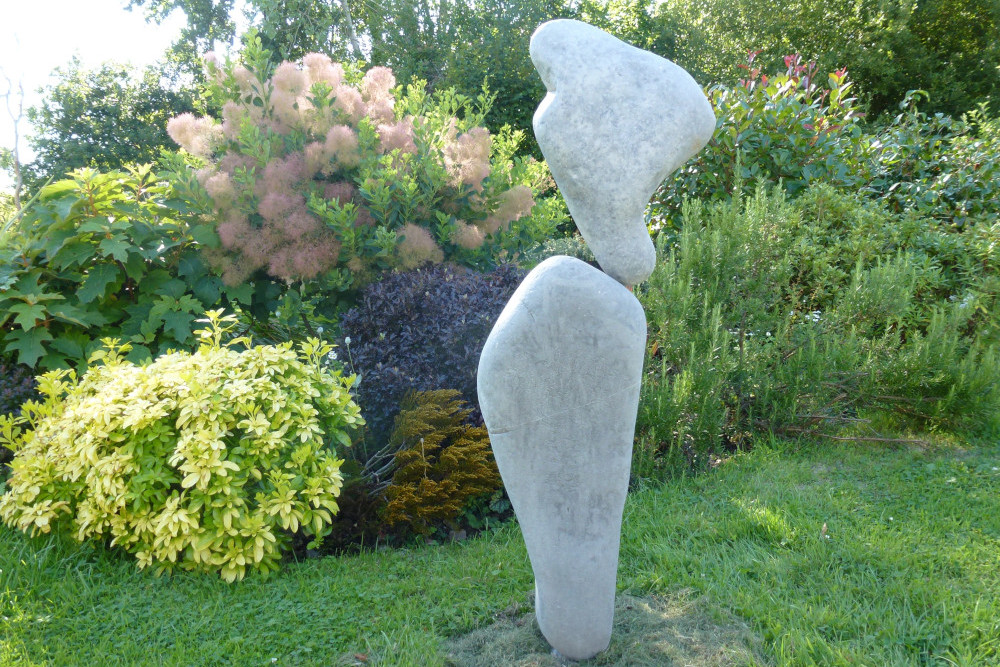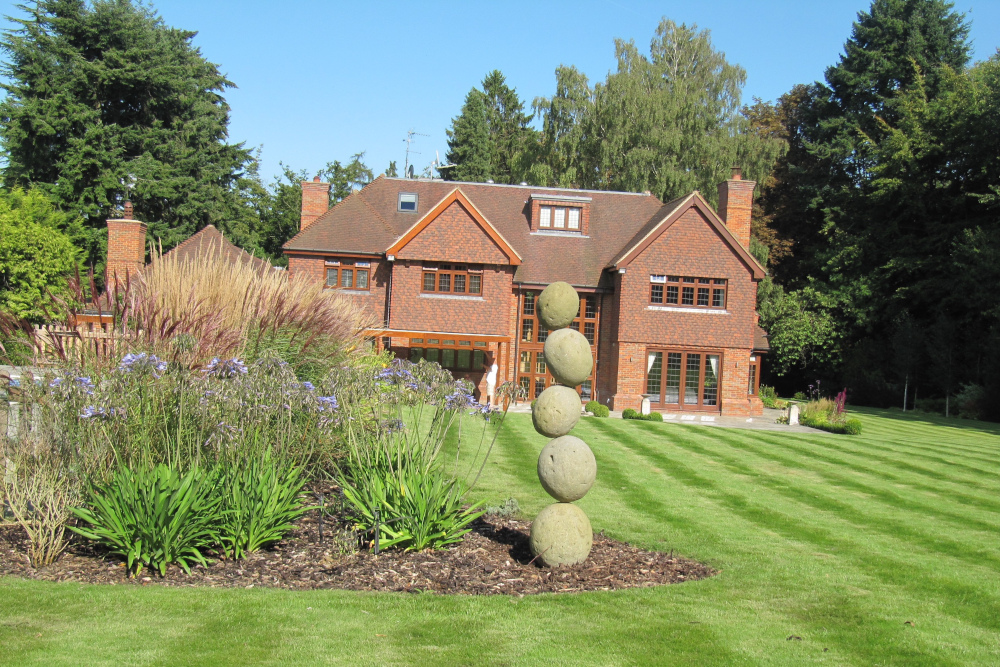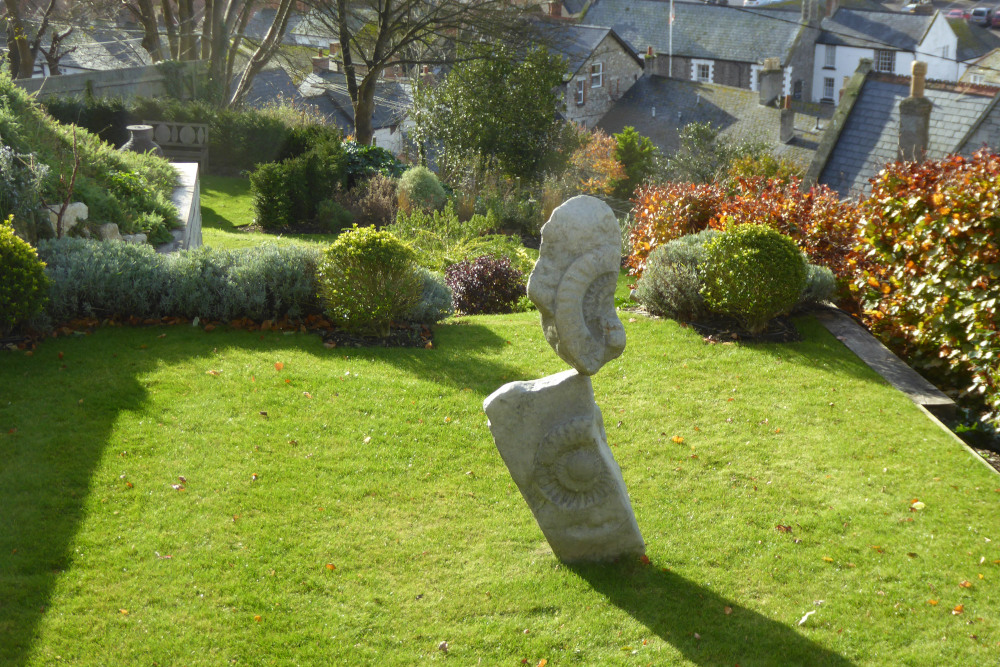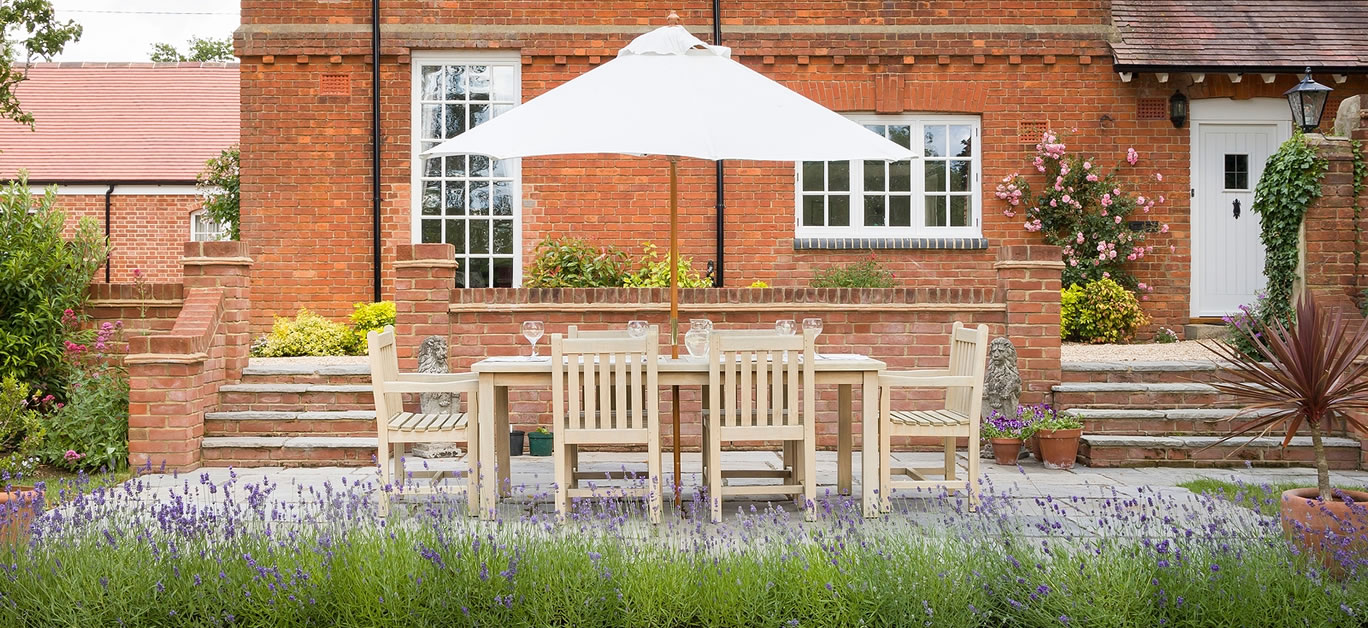Stone balancing artist Adrian Gray creates his distinctive sculptures by achieving perfect and impossible balance. Here, he discusses some ideas on how you can incorporate balance into your garden.
Mix planting textures and use repetition
I find gardens that mix planting textures particularly interesting visually and it is a powerful way to not only create balance, but it also give the illusion of extra size. Repeating plant shapes or colours gives a feeling of calm and serenity, but unless this includes contrast in both texture, colour and form, your garden can look sterile. A nice balance can be achieved by blending about one third of plants which have a fine, soft texture with two thirds which are coarse and bold.
Some questions to ask yourself when looking at the balance of textures are; is the plant feathery soft or sharp and spiky? Are its leaves shiny or matte? Is the bark smooth or rough? Are the seed heads furry or coarse to the touch? You can achieve a pleasing balance of textures through repetition – or planting in groups of three, five or seven – gardeners call this planting in ‘drifts.’ This will help to bring the look together.

Incorporate sculpture
I would say this, seeing as my work is primarily used in gardens, but there is a reason sculptures work so well in outdoor spaces. You only need to look at famous sculpture gardens, such as Barbara Hepworth’s in Cornwall’s St Ives and the Forest of Dean’s Sculpture trail, to see how sculptures provide a natural and beautiful foil to plants – helping to both set them off and separate a garden into different and distinct zones.
When incorporating a sculpture into your garden, think about your wider garden design and place the piece in an area that generates ‘flow.’ Different areas of your garden will generate different feelings and choosing the best place for your sculpture will help promote particular emotions and draw your eye into specific areas. Placing a sculpture in a wide-open space can elicit feelings of euphoria and freedom from care, whereas pieces placed in a smaller, cosier area, help to communicate feelings of safety and nurturing. They can refresh your garden by providing a balancing contrast and help to rekindle your appreciation for existing plants.
To achieve a balance between the garden and your indoor space, consider placing a sculpture on a long axis visible from a prominent window or directly in front of a window or door. If your garden can be viewed from different vantage points, you could consider placing pieces into different areas to help provide definition.

Balance your senses
Having a garden that works aesthetically is wonderful, but I always feel that gardens which balance your senses, by including aromatic plants, come alive on a three-dimensional level. There is something powerful about brushing past fragrant plants and scented flowers and they can often bring up pleasant memories – as well as attracting more bees and butterflies.
Lovely fragrant additions to your garden include lilac, rose, dianthus, gardenia, jasmine, citrus, honeysuckle, hosta, alyssum, stock, bee balm, nicotiana, moonflower, citrus, ginger lily, and michellia. Avoid putting too many different types of fragrant plants into your landscape, as otherwise, it can actually become overpowering and unpleasant. The creation of scent in a garden is certainly a balancing act.
Think about where to place scents. Clever ideas include pathways, entrances or smaller spaces where delicious smells can linger or hit the air as you walk. You also might want to consider plants that release their smell at night rather than in the day. Brugmansia releases its scent at night-time but has no odour in the day, this can make summer evenings in your garden even more magical.

Achieve balance through careful planning
To create a balanced aesthetic, follow the gardener’s rule of thirds – plant in threes – odd numbers are useful for achieving a sophisticated look which is also pleasing and calming to the eye. While the number of plants you can use is directly related to the amount of space you are working with, you can create a sense of rhythm by repeating elements, paying attention to frequency. You can repeat a colour, a shape, or a specific plant.
Don’t be limited in your thinking though when planning how to work in odd numbers of plants or repetition. A straight line is the obvious choice, but there are other things you can do. You can try an equilateral triangle or allow plants to mingle and intertwine, rather than be lined up like soldiers. Their repetition will provide balance even when they are freer in their formation and it will give a more natural look.
For more information on Adrian Gray, visit stonebalancing.com.





















